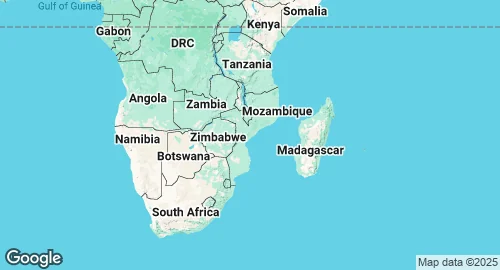Mozambique Military Forces 🇲🇿
Military Strength Overview
| 🛩️ Air Force | 21 active aircraft |
| 🪖 Active Troops | 11,200 personnels |
Defense Statistics & Key Metrics
| Population | 33.6 million (2023) |
| GDP | $21.0 billion (2023) |
| GDP per capita | $623 (2023) |
| Military Budget | $450.4 million (2024) |
| Share of GDP in Milex | 2.0% (2024) |
| Share of Govt Expenditures | 6.1% (2024) |
| Military spends per capita | $13 (2024) |
| Inflation Rate | 7.13% (2023) |
| Military Personnel | 11,000 (2020) |
Strategic Overview in 2025
Mozambique's long coastline dominates the Mozambique Channel, a key maritime transit route for global trade and energy shipments. This is heightened by the discovery of vast offshore natural gas reserves in the northern province of Cabo Delgado, positioning the country as a potential major energy exporter. However, Mozambique's ability to leverage these advantages is severely undermined by internal fragility. Endemic corruption, political instability following contested elections, and weak state institutions hinder development and security. The primary strategic challenge is a persistent Islamist insurgency in Cabo Delgado, which threatens the multi-billion dollar gas projects and regional stability. Consequently, Mozambique's strategic posture is defined by a reliance on foreign partners for internal security, limiting its capacity for independent power projection.
Military Forces
The Mozambique Defence Armed Forces (FADM) are structured into an Army, Navy, and Air Force, but suffer from systemic weaknesses. Formed in 1994 by integrating government and former rebel forces, the FADM has struggled to develop into a cohesive and effective fighting force. A significant portion of its land forces' equipment consists of aging, often inoperable Soviet-era tanks, armored vehicles, and artillery, with operational readiness reported to be extremely low.
The Navy and Air Force have limited operational capabilities to patrol Mozambique's extensive coastline and airspace. While recent acquisitions, such as fast interceptor craft from India, aim to enhance maritime security capabilities, the naval force remains small and inadequately equipped to counter significant threats. The military as a whole is characterized by inadequate logistics, poor training, and insufficient funding, which has made it incapable of effectively containing the Cabo Delgado insurgency on its own. The country has no significant domestic defense industry and relies entirely on foreign suppliers.
Strategic Trends
The most significant trend shaping Mozambique's military posture is the ongoing conflict in Cabo Delgado. The FADM's initial failures to contain the Ansar al-Sunna insurgency led to the deployment of private military contractors and, more decisively, intervention forces from Rwanda and the Southern African Development Community (SADC). While these foreign forces have successfully pushed back insurgents from key areas, this reliance highlights the FADM's deep-seated incapacities.
A key foreseeable trend is the effort to build the FADM's capacity with assistance from international partners, including the EU, U.S., and Rwanda, which is providing advanced training to Mozambican soldiers. The goal is for the FADM to eventually assume primary responsibility for security in the north, but this remains a long-term prospect. The withdrawal of the SADC mission in July 2024 raises concerns about the potential for an insurgent resurgence.
Mozambican Military Budget History
Population and Military Personnel Trends
GDP and Inflation Rate Trends
Military Expenditure: SIPRI Milex.
